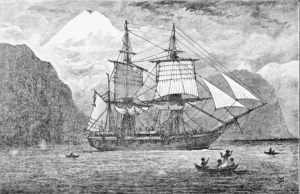Wreck of second world war landing craft found off Wales after 77 years

Marine scientists have discovered the wreck of a second world war landing craft off the Welsh coast 100 miles from where the Admiralty believed it had sunk.
The vessel, known as Landing Craft Tank (LCT) 326, was lost with 14 crew on board in February 1943, and was thought to have hit a mine or run into bad weather off the Isle of Man.
But experts from Bangor and Bournemouth universities believe they have found the missing vessel in 90 metres (300 feet) of water much further south off Bardsey Island in north Wales, according to The Guardian.
LCT 326 was one of a type of vessel designed to land armoured vehicles during amphibious operations such as D-Day. It was built in Middlesbrough and launched in April 1942.
In the winter of 1943, the ship was part of a transit cruise from Troon, Ayrshire, to Appledore, Devon. The weather was heavy and the flotilla made slow progress.
According to the official 1946 Admiralty records, LCT 326 was lost off the Isle of Man. On board were sailors from Bristol, Yorkshire, Manchester, and Scotland. But new research has established that LTC 326 was last seen with the convoy by its escort ship, HMS Cotillion, on 1 February much further south, to the north-west of Bardsey.
A previously unidentified wreck, broken in two, lies 25 miles south of that last known position on a near-perfect line with the flotilla’s course.
Sonar data of the wreck was collected by a team from Bangor University in Gwynedd, north Wales, using the research vessel, Prince Madog, in 2019.
The data showed that this wreck was 58 metres long and 10 metres wide, similar to the dimensions of an LCT. The data clearly showed key features of an LTC such as its distinctive landing gangway and stern deckhouse.
It appears to have foundered in heavy seas, and probably broke in half just forward of the bridge with both halves staying afloat long enough to have become separated.
The nautical archaeologist and historian Innes McCartney, of Bournemouth University, says: “The wreck of LCT 326 is one of over 300 sites in Welsh waters which have been surveyed by the Prince Madog. The aim of this particular piece of research is to identify as many offshore wrecks in Welsh waters as possible and shed light on their respective maritime heritage.
“This aspect of the project has resulted in many new and exciting discoveries relating to both world wars.”
The location of this naval grave will be reported to the Admiralty, so that the records can be corrected and the resting place of the 14 crew accurately recorded, according to The Guardian.












